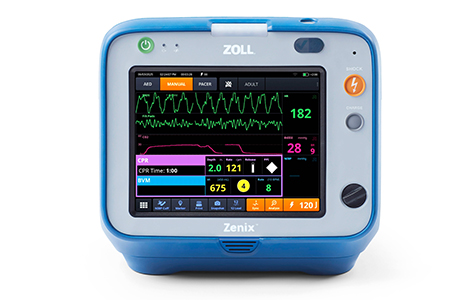Global Sepsis Alliance and Rory Staunton Foundation collaborate and are speaking with one voice against sepsis
New York, London – The Rory Staunton Foundation and Global Sepsis Alliance today announced that they will unite to fight against Sepsis. They aim to collaborate to create Global Sepsis awareness and mandates. Sepsis is the most common and least recognized disease of our time and claims millions of lives annually. The state of New York is now the first worldwide to establish statutory regulations for sepsis management.
On January 29th 2013, as a result of the remarkable success of the efforts of the Rory Staunton Foundation, New York Governor Cuomo announced that New York State will lead the nation by becoming the first state to require all hospitals to adopt best practices for the early identification and treatment of sepsis, a medical condition which is the number one killer in hospitals and the eleventh leading cause of death in the United States. These measures, which will be implemented through regulations issued by the Department of Health, will save an estimated 5,000 to 8,000 lives per year.
At the same time, the Governor also announced that the Department of Health will issue proposed regulations to ensure that the unique needs of pediatric patients are respected by requiring, among other things, that hospitals communicate critical test results in plain language to parents before a child is discharged from the hospital. The regulations also require hospitals to post a „Parents‘ Bill of Rights“ letting parents and patients know of the important protections provided by these regulations. These sepsis and pediatric care reforms deliver on the commitment in the Governor’s 2013 State of the State address that New York set a „gold standard“ for patient care.
These initiatives, together called „Rory’s Regulations“, were announced, following the tragic, untimely and unnecessary death of 12 year old Rory Staunton. Rory Staunton scraped his elbow while diving for a basketball at the school gym on March 29th 2012. He became unwell shortly afterwards, and his condition rapidly deteriorated. Four days later, on April 1st, Rory died from unrecognized and undiagnosed sepsis having previously been sent home from a leading New York University Emergency Hospital.
The Rory Staunton Foundation was established as a result of this tragedy and launched a sepsis awareness campaign to provide information to medical professional and the general public that sepsis is a serious and deadly illness.
Under the direction of Orlaith and Ciaran Staunton, the Rory Staunton Foundation made great achievements and came to the attention of the Global Sepsis Alliance (GSA), under the leadership of Dr Konrad Reinhart and Dr Ron Daniels, as a shining example of strategies to engage governments. The GSA has achieved world successes in engaging professional societies, healthcare providers policy makers and general public with its initiative for World Sepsis Day, 13th September 2013.
Both organizations call governments around the world to examine their response to sepsis. National strategies in New York, Wales and Scotland will be used as examples to drive response.
Sepsis – the under-recognized killer
In the developing world, sepsis accounts for 60 to 80% of lost lives per year in childhood, killing more than 6 million neonates and children yearly and is responsible for more than 100,000 cases of maternal sepsis. Every hour, about 50 people die from sepsis.
Sepsis causes more deaths than prostate cancer, breast cancer and HIV/AIDS combined. Globally, an estimated 20 to 30 million cases of sepsis occurs each year. Experts in the field believe sepsis is actually responsible for the majority of the mortality associated with HIV/AIDS, malaria, pneumonia and other infections acquired in the community, in healthcare settings and by traumatic injury.
Sepsis is often diagnosed too late, because the clinical symptoms and laboratory signs that are currently used for the diagnosis of sepsis, like raised temperature, increased pulse or breathing rate, or white blood cell count are unspecific. And the worst: Sepsis is increasing at an annual rate of 8 to 13%. The toll of sepsis can be reduced, but a major barrier to success lies in the fact that Sepsis is largely unknown to the public, and poorly understood by professionals. Too many people develop sepsis. Too few survive.
For more information please download the official Press Kit : http://tinyurl.com/bt5jnss
Global Sepsis Alliance
K. Reinhart & R. Daniels
office@world-sepsis-day.org
www.world-sepsis-day.org
www.globalsepsisalliance.org
Rory Staunton Foundation
Orlaith & Ciaran Staunton
stauntonny@gmail.com
www.rorystaunton.com
Bildrechte: World Sepsis Day Head Office
About World Sepsis Day and Global Spesis Alliance
World Sepsis Day, 13th September 2013, is an initiative by the Global Sepsis Alliance (GSA) a non profit organization which alignes sofar over 1300 Hospitals and more than 160 national and international Non Profit Organizations behind the goal to reduce Sepsis incidence by 20% by 2020. http://www.world-sepsis-day.org
Kontakt
World Sepsis Day Head Office / Global Sepsis Alliance
Dr. Reinhart, Dr. Daniels
c/o Circus PR, Galvanistr. 15
10587 Berlin
+49 (0)30 31807317
office@world-sepsis-day.org
http://www.world-sepsis-day.org
Pressekontakt:
Circus PR -UwePorschke-
Sandrina Koemm
Galvanistrasse 15
10587 Berlin
+49 (0)30 31807317
office@circus-pr.com
http://www.circus-pr.com






